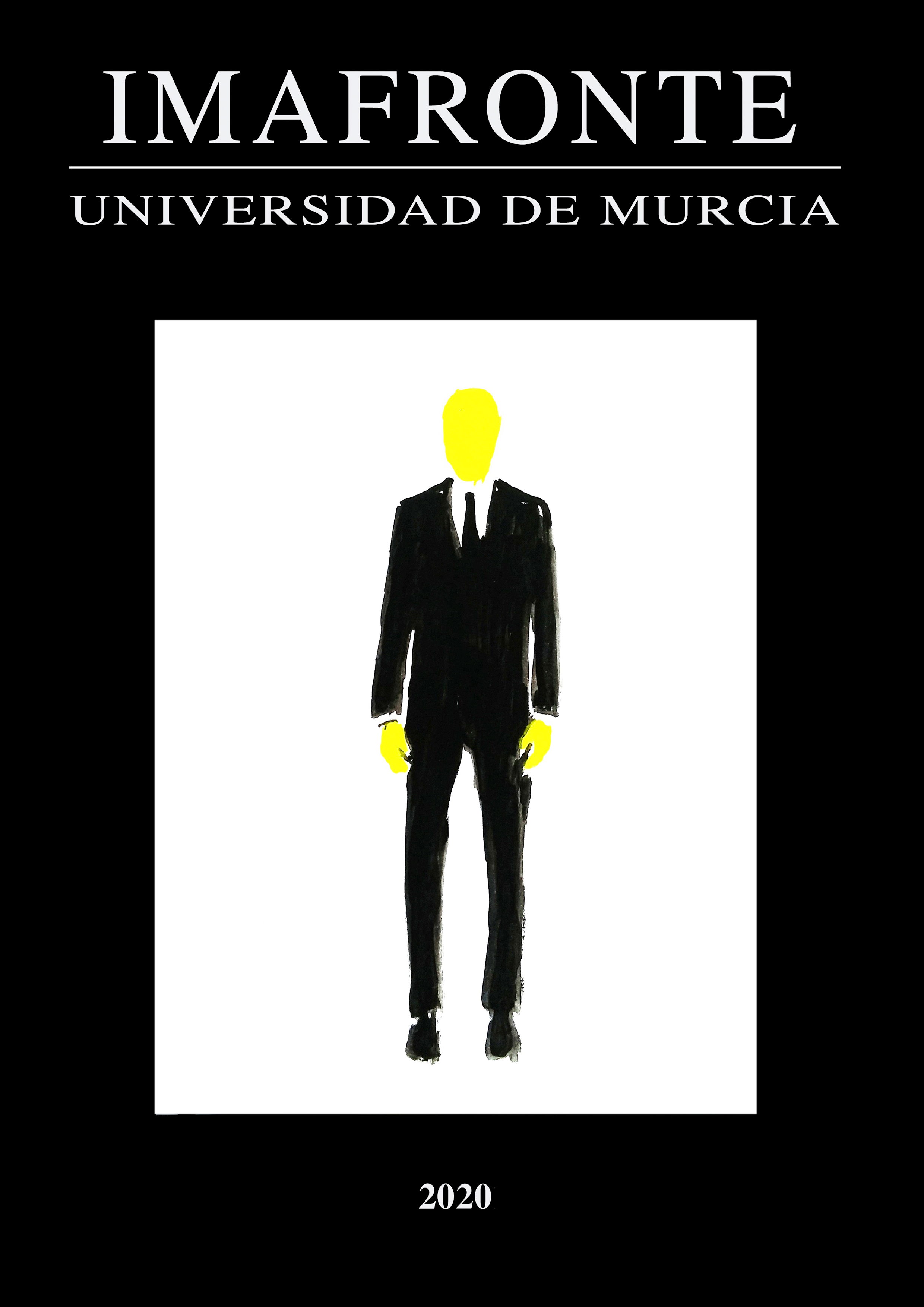Victoria o muerte: Música para los últimos momentos de El Álamo en el cine
Resumen
La defensa y batalla de El Álamo en 1836 supone uno de los grandes acontecimientos de la Historia americana, hito fundacional sobre el que el cine se interesó desde sus primeros momentos, y que ha conocido diversas interpretaciones a lo largo de un siglo (1911-2004). Los momentos más dramáticos fueron las horas previas a la batalla final, tras trece días de asedio de las tropas del general Santa Anna a los texanos, y la propia batalla. El tratamiento musical que los diferentes compositores de la partitura de cada película han dado a estos momentos ha variado en función de diversos factores. En este artículo analizamos la música de las escenas relativas al día previo a la batalla y al asalto final, abordando especialmente el toque de degüello empleado por cada uno, su importancia en el conjunto de la partitura, sus posibles referentes, su estructura y el carácter del tema. Para ello diseñamos unas tablas de análisis de contenido categorial, que nos permiten comparar las seis películas estudiadas y llegar a las conclusiones.
Descargas
-
Resumen875
-
PDF525
-
EPUB63
Citas
Carmona, L. M. (2008). Diccionario de compositores cinematográficos. Madrid: T&B Editores.
Carmona, L. M. (2012). Música & Cine. Las grandes colaboraciones entre director y compositor. Madrid: T&B Editores.
Chemerka, W. R. y Wiener, A. J. (2009). The music of the Alamo: from 19th century ballads to big-screen soundtracks. Houston: Bright Sky Press.
Clark, D. y Andersen, C. P. (1995). John Wayne’s The Alamo: the making of the epic film. New Jersey: Carol Publishing Group.
Edmonson, J. C. (2000). Alamo story: from early history to current conflicts. Lanham: Republic of Texas Press.
Flores, R. R. (2010). Remembering the Alamo: Memory, Modernity, and the Master Symbol. Austin: University of Texas Press.
Gevinson, A. (Ed., 1997). Within Our Gates: Ethnicity in American Feature Films, 1911-1960. Berkeley and Los Angeles: University of California Press.
Graham, D. (1985-1986). Remembering The Alamo: the story of the Texas Revolution in popular culture. The Southwest Historical Quarterly, 89, 35-66.
Groneman, W. (2007). David Crockett: Hero of the Common Man. New York: Tom Doherty Associates.
Hansen, T. (Coord., 2003). The Alamo reader: a study in history. Mechanicsburg: Stackpole Books.
Hatch, T. (1999). Encyclopedia of The Alamo and the Texas revolution. Jefferson: McFarland & Company.
Hatch, T. (2007). Encyclopedia of The Alamo and the Texas revolution. Jefferson: McFarland & Company.
J. D. V. M. (1863). Diccionario militar. Madrid: Imprenta de Luis Palacios.
Justo Estebaranz, A. y Pérez García, L. (2015). Del Japón feudal al planeta Akir: Estudio comparativo de la música en “Los siete samuráis” y sus remakes americanos. En AVANCA CINEMA 2015. Avanca: Ediçoes Cine-Clube de Avanca.
Justo Estebaranz, A. y Pérez García, L. (2015). Influencias de la música para western de Dimitri Tiomkin en el spaghetti western. Ucoarte. Revista de Teoría e Historia del Arte, 4, 93-103.
Kalinak, K. (2016). Scoring the West: Dimitri Tiomkin and Howard Hawks. En Howard Hawks. New perspectives. London: Palgrave, 157-171.
Karlin, F. (1994). Listening to movies. New York: Schirmer Books.
Lafuente Alcántara, M. (1852). Historia de Granada. Tomo Segundo. París: Baudry, Librería Europea.
Langman, L. (2000). Destination Hollywood: The Influence of Europeans on American Filmmaking. Jefferson: McFarland.
Matovina, T. M. (2002). The Alamo remembered: texano accounts and perspectives. Austin: University of Texas Press.
McEnteer, J. (2004). Deep in the heart: the Texas tendency in American politics. Westport: Praeger.
McGivern, C. (2007). John Wayne. La sombra de un gigante. Madrid: Ediciones Jaguar.
Munn, M. (2003). John Wayne: the man behind the myth. New York: New American Library.
Niemi, R. (2006). History in the Media: Film and Television. Santa Barbara: ABC-CLIO.
Ordenanzas de S. M. para el régimen, disciplina, subordinación y servicio de sus exércitos. Tomo segundo. 1768. Madrid: Edición de Antonio Marín.
Österberg, B. O. (2009). Colonial America on Film and Television: A Filmography. Jefferson: McFarland.
Padrol, J. (2007). Diccionario de bandas sonoras. Madrid: T&B Editores.
Pérez García, L. (2017). Dimitri Tiomkin y la música del western (1940-1969): contribuciones de un compositor europeo a un género genuinamente americano. Tesis Doctoral defendida el 7 de julio de 2017 en la Universidad de Sevilla.
Pérez García, L. y Justo Estebaranz, A. (2016). Harry Sukman y Sam Fuller. Música para un western de culto: Cuarenta pistolas (1957). Pasaje a la Ciencia, 18, 9-19.
Reglamento para el ejercicio y maniobras de la caballería. Volumen I. 1824. México: Impreso en la oficina a cargo de Martín Rivera.
Rowan, T. (2015). Motion Pictures From the Fabulous 1950's. Lulu.com.
Stilwell, R. J. (2007). The Fantastical Gap between Diegetic and Nondiegetic. En Beyond the soundtrack: Representing music in cinema. Berkeley: University of California Press, 184-202.
Tavernier, B. y Coursodon, J.-P. (2010). 50 años de Cine norteamericano, Vol. 2. Madrid: Akal.
Thompson, F. (2001). The Alamo: A Cultural History. Dallas: Taylor Trade Publishing.
Wierzbicki, J. E. (2012). Music, sound and filmmakers: Sonic Style in Cinema. New York: Routledge.
Williams, A. (1933). A critical study of the siege of The Alamo and of the personnel of its defenders. Chapter II: Santa Anna’s invasion of Texas, and his investment and final assault of The Alamo. The Southwestern Historical Quarterly, 37, 1, 1-44.
Xalabarder, C. (2006). Música de cine. Una ilusión óptica. Edición digital de Libros en Red.
Xalabarder, C. (2013). El guion musical en el cine. CreateSpace Independent Publishing Platform.
Derechos de autor 2020 Ángel Justo Estebaranz, Lucía Pérez García

Esta obra está bajo una licencia internacional Creative Commons Atribución-CompartirIgual 4.0.
Las obras que se publican en esta revista están sujetas a los siguientes términos:
1. Los autores ceden de forma no exclusiva a la revista los derechos de explotación (reproducción, distribución, comunicación y transformación).
2. Las obras que se publican en esta revista están sujetas a la licencia Attribution-ShareAlike 4.0 International (CC By SA 4.0). Por lo que se pueden copiar, usar, difundir, transmitir y exponer públicamente, siempre que:
i) se cite la autoría y la fuente original de su publicación (revista, editorial y URL de la obra), permitiendo así su reconocimiento.
ii) se permite remezclar, transfromar o crear a partir del material mientras se mantenga la misma licencia del original.
3. Condiciones de auto-archivo. Se permite y se anima a los autores a difundir electrónicamente las versiones pre-print (versión antes de ser evaluada) y/o post-print (versión evaluada y aceptada para su publicación) de sus obras antes de su publicación, ya que favorece su circulación y difusión más temprana y con ello un posible aumento en su citación y alcance entre la comunidad académica. Color RoMEO: verde.
























